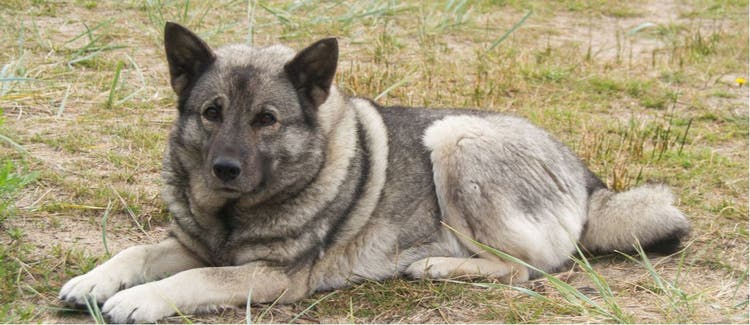
Choosing a Norwegian Elkhound
The Norwegian elkhound is a strong and sturdy Northern breed with a beautiful grey coat color. Known as the ‘Dog of the Vikings’, the elkhound was originally used to hunt elk and bear in Norway, and is now a beloved companion and family pet.
History and Origin
As the name implies, the Norwegian elkhound is an ancient dog hailing from Norway. Its history can be traced back as early as 5000 B.C, based on archeological evidence. The breed has been cherished by farmers, hunters, herdsmen and Vikings. Throughout history, the elkhound has been used as watchdogs, guards for herds and hunters of elk, moose, bear and reindeer. The breed uses his sense of smell to track game and then keeps it cornered by barking until the hunter arrives for the kill. Elkhounds have also been used as sled dogs.
The first recorded exhibit of the Norwegian elkhound was in 1877 in Norway. From then on, interest in the breed spread to England and the United States. By the 1930s, the first Norwegian elkhound was recognized by the American Kennel Club as a member of the hound group.
Appearance and Size
The Norwegian elkhound is a medium-sized, sturdy dog with a wedge-shaped head. The ears are erect and pointed and the tail is tightly rolled over the dog’s back. The coarse, straight, double hair coat is a grey color with a lighter undercoat and black tips. The ears, tail tip and muzzle are black.
The adult Norwegian elkhound stands around 19 to 20 inches at the shoulder and weighs about 40 to 60 pounds.
Personality
The Norwegian elkhound is a calm and gentle dog and a great family protector. As with other Northern breeds, the elkhound prefers cooler climates.
Home and Family Relations
The elkhound is an excellent and loyal family pet. He does well around older children and is a faithful companion. The breed tends to be active and need plenty of exercise and a large yard. Apartment dwelling is tolerable if plenty of long walks are provided. Make sure to keep the elkhound on a leash since he has a tendency to roam if something catches his eye.
This breed is a good watchdog and will bark when strangers approach. Some may continue to bark to excess. In addition, when approached by strangers, elkhounds tend to be reserved.
Training
The elkhound can be somewhat stubborn and independent. For this reason, he may be resistant to obedience training. He requires a firm and consistent hand but affection. As a hunter, the Norwegian elkhound is courageous with lots of stamina. He can hold large game by barking and dodging attacks. The breed can track for long hours over rough landscape in any weather but should be kept out of very hot humid weather.
Special Concerns
As with other Arctic breeds, the Norwegian elkhound seasonally sheds but requires frequent brushing year round. The double coat leads the breed to be prone to heat stress and shouldn’t be exercised on hot humid days.
Common Diseases and Disorders
The Norwegian elkhound is a hardy breed that has few known diseases. They are, however, prone to obesity, hip dysplasia, hot spots and progressive retinal atrophy, a disease that causes nerve cells at the back of the eye to degenerate, leading to blindness. Norwegian elkhounds may also develop Fanconi’s syndrome, a disease of the kidneys.
The average life span of the Norwegian elkhound is 12 to 15 years.
We realize that each dog is unique and may display other characteristics. This profile provides generally accepted breed information only.